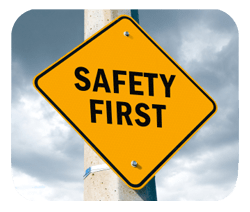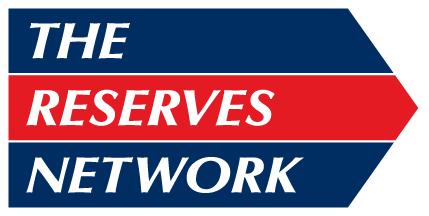OSHA’s Top 10 Violations of Fiscal Year 2011 (TRN Safety Alert)

OSHA has released its annual list of the top 10 workplace violations for fiscal year 2011 (October 1, 2010 – September 30, 2011). Annually the list contains mostly the same standards, only switching positions, and this year is no exception.
The Top 10 Citations for FY 2011 are…
1. Fall Protection – General Requirements
Standard 1926.501
Total Violations: 7,129
Top Sections Cited
1926.501(b)(13) – Fall protection requirements for residential construction.
1926.501(b)(1) – Requires fall protection for walking/working surfaces 6 feet or higher.
1926.501(b)(10) – Fall protection requirements for roofing activities on low-slope roofs.
2. Scaffolding – General Requirements
Standard 1926.451
Total Violations: 7,069
Top Sections Cited
1926.451(g)(1) – Fall protection on scaffolds higher than 10 feet above a lower level.
1926.451(b)(1) – Requires each platform on all working levels to be fully planked or decked between the front uprights and the guardrail supports.
1926.451(e)(1) – Access requirements when platforms are more than 2 feet above or below a point of access; prohibits use of crossbars as an access means.
3. Hazard Communication
Standard 1910.1200
Total Violations: 6,538
Top Sections Cited
1910.1200(e)(1) – Requires a written Hazard Communication program.
1910.1200(h)(1) – Requires informing employees of hazardous chemicals, and training employees on protections form the hazards.
1910.1200(f)(5) – Requirements for labels on hazardous chemicals.
1910.1200(g)(1) – Contains requirements for Material Safety Data Sheets.
1910.1200(g)(8) – Requirements to maintain copies of Material Safety Data Sheets that are easily accessible to employees.
4. Respiratory Protection
Standard 1910.134
Total Violations: 3,944
Top Sections Cited
1910.134(c)(1) – Requires the employer to develop a written respiratory protection program.
1910.134(e)(1) – Sets the minimum requirements for the medical evaluation required to determine if an employee is fit to use a respirator.
1910.134(c)(2) – Requirements for voluntary use of respirators.
1910.134(f) – Requires fit testing and specifies the types of fit testing allowed, procedures for fit testing and how the results must be uses.
5. Lockout/Tagout
Standard 1910.147
Total Violations: 3,639
Top Sections Cited
1910.147(c)(4) – Requirements in energy control procedures.
1910.147(c)(6) – Requirements to periodically inspect the energy control procedures.
1910.147(c)(7) – Training and communication requirements.
1910.147(c)(1) – Energy control program requirements.
1910.147(d)(4) – Requirements for the application of Lockout/Tagout devices.
6. Electrical – Wiring Methods
Standard 1910.305
Total Violations: 3,584
Top Sections Cited
1910.305(g)(1) – Concerns the use of flexible cords and cables.
1910.305(b)(1) – Requirements for conductors entering boxes, cabinets and fittings.
1910.305(g)(2) – Covers identification, splices and termination.
1910.305(b)(2) – Requirements on covers and canopies.
1910.305(a)(1) – Requirements for temporary wiring.
7. Powered Industrial Trucks
Standard 1910.178
Total Violations: 3,432
Top Sections Cited
1910.178(l)(1) – Safe operation of industrial trucks.
1910.178(l)(4) – Refresher training and evaluation requirements.
1910.178(l)(6) – Employer shall certify that each operator has been trained and evaluated as required.
1910.178(p)(1) – Requires industrial trucks in need of repair to be taken out of service until restored to safe operating condition.
1910.178(q)(7) – Requirements for examining industrial trucks before they are placed into service.
8. Ladders
Standard 1926.1053
Total Violations: 3,244
Top Sections Cited
1926.1053(b)(1) – Requires ladder side rails to extend at least 3 feet above an upper landing surface, or be secured at its top to a rigid support.
1926.1053(b)(4) – Use of ladders is restricted to only the purpose for which they were designed.
1926.1053(b)(13) – Prohibits using the top or top step of a stepladder as a setup.
1926.1053(b)(16) – Requires defective ladders to be marked with a “Do Not Use” notification and withdrawn from service until repaired.
1926.1053(b)(22) – Prohibits an employee from carrying any object that may cause the employee to lose balance and fall.
9. Electrical – General Requirements
Standard 1910.303
Total Violations: 2,863
Top Sections Cited
1910.303(b)(2) – Requires listed or labeled equipment to be installed and used in accordance with the instructions included in the listing or labeling.
1910.303(g)(1) – Sufficient access and working space is required for all electric equipment to allow safe operation and maintenance of the equipment.
1910.303(g)(2) – Guarding live parts.
1910.303(b)(1) – Requires electrical equipment to be free from recognized hazards likely to cause death of serious physical harm.
10. Machine Guarding – General Requirements
Standard 1910.212
Total Violations: 2,728
Top Sections Cited
1910.212(a)(1) – Requirements for guarding to protect employees in the machine area from hazards.
1910.212(a)(3) – Requirement concerning the point of operation guarding.
1910.212(b) – Requires the secure anchoring of machinery for machines at a fixed location.
1910.212(a)(5) – Specifies requirements for guarding blades.
1910.212(a)(2) – General requirements for the location of a machine guard.



